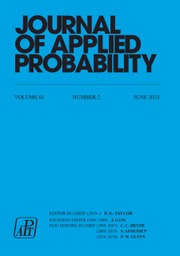Article contents
The dutch draw: constructing a universal baseline for binary classification problems
Published online by Cambridge University Press: 19 September 2024
Abstract
Novel prediction methods should always be compared to a baseline to determine their performance. Without this frame of reference, the performance score of a model is basically meaningless. What does it mean when a model achieves an  $F_1$ of 0.8 on a test set? A proper baseline is, therefore, required to evaluate the ‘goodness’ of a performance score. Comparing results with the latest state-of-the-art model is usually insightful. However, being state-of-the-art is dynamic, as newer models are continuously developed. Contrary to an advanced model, it is also possible to use a simple dummy classifier. However, the latter model could be beaten too easily, making the comparison less valuable. Furthermore, most existing baselines are stochastic and need to be computed repeatedly to get a reliable expected performance, which could be computationally expensive. We present a universal baseline method for all binary classification models, named the Dutch Draw (DD). This approach weighs simple classifiers and determines the best classifier to use as a baseline. Theoretically, we derive the DD baseline for many commonly used evaluation measures and show that in most situations it reduces to (almost) always predicting either zero or one. Summarizing, the DD baseline is general, as it is applicable to any binary classification problem; simple, as it can be quickly determined without training or parameter tuning; and informative, as insightful conclusions can be drawn from the results. The DD baseline serves two purposes. First, it is a robust and universal baseline that enables comparisons across research papers. Second, it provides a sanity check during the prediction model’s development process. When a model does not outperform the DD baseline, it is a major warning sign.
$F_1$ of 0.8 on a test set? A proper baseline is, therefore, required to evaluate the ‘goodness’ of a performance score. Comparing results with the latest state-of-the-art model is usually insightful. However, being state-of-the-art is dynamic, as newer models are continuously developed. Contrary to an advanced model, it is also possible to use a simple dummy classifier. However, the latter model could be beaten too easily, making the comparison less valuable. Furthermore, most existing baselines are stochastic and need to be computed repeatedly to get a reliable expected performance, which could be computationally expensive. We present a universal baseline method for all binary classification models, named the Dutch Draw (DD). This approach weighs simple classifiers and determines the best classifier to use as a baseline. Theoretically, we derive the DD baseline for many commonly used evaluation measures and show that in most situations it reduces to (almost) always predicting either zero or one. Summarizing, the DD baseline is general, as it is applicable to any binary classification problem; simple, as it can be quickly determined without training or parameter tuning; and informative, as insightful conclusions can be drawn from the results. The DD baseline serves two purposes. First, it is a robust and universal baseline that enables comparisons across research papers. Second, it provides a sanity check during the prediction model’s development process. When a model does not outperform the DD baseline, it is a major warning sign.
MSC classification
Information
- Type
- Original Article
- Information
- Copyright
- © The Author(s), 2024. Published by Cambridge University Press on behalf of Applied Probability Trust
References
- 1
- Cited by


